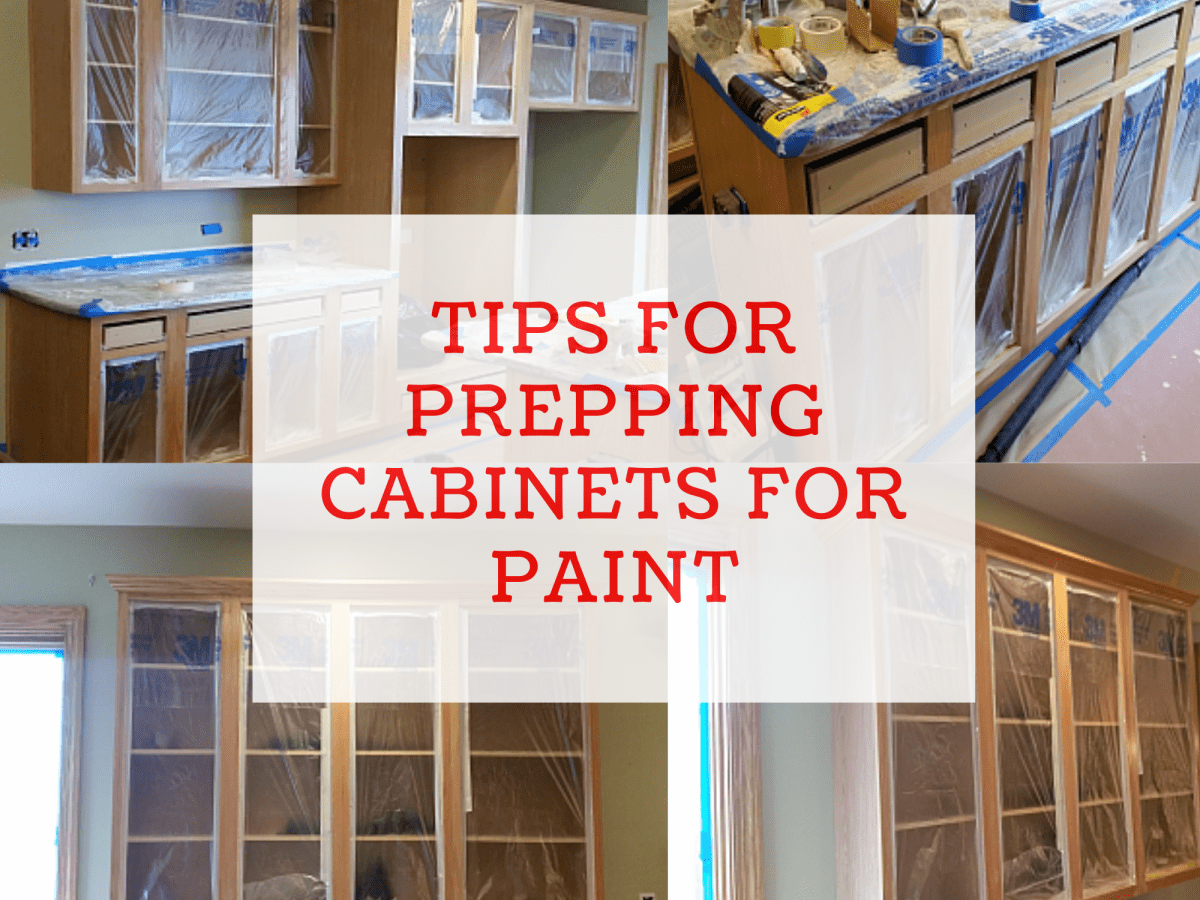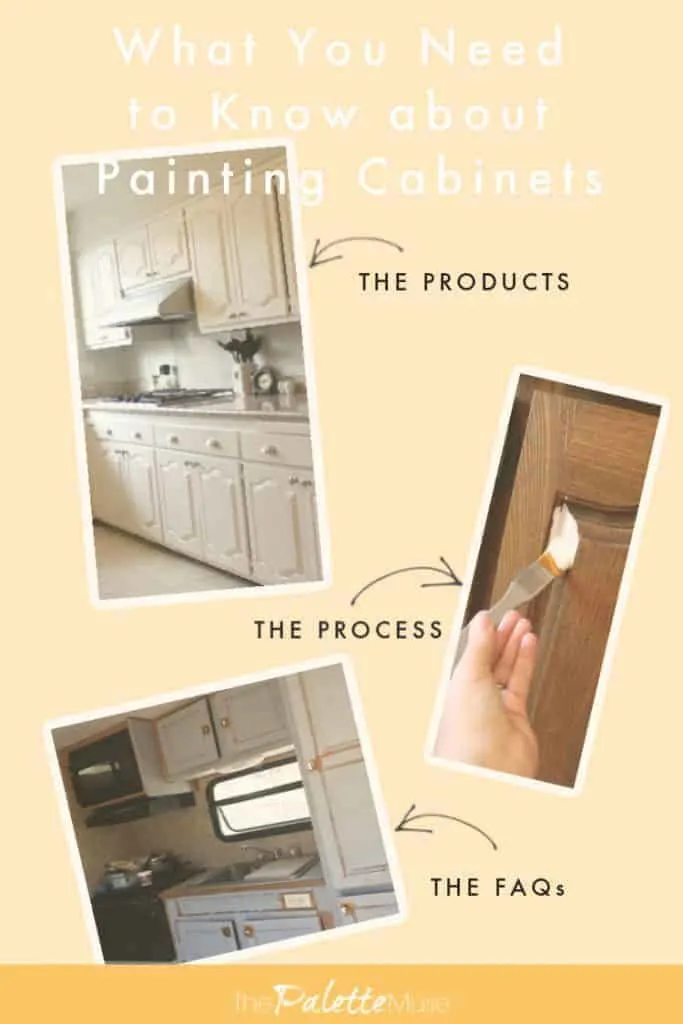Painting cabinets can be a great way to update the look of your kitchen or bathroom. However, it is important to take the proper steps to ensure that the end result is a professional-looking finish. Before you begin painting your cabinets, there are a few things that you should do in order to ensure a successful project. These include cleaning the cabinets, sanding the surfaces, and priming the wood. Additionally, you should choose the right type of paint and brushes to use. Taking the time to adequately prepare your cabinets before painting them will ensure that you get the desired results.
Prepare the Cabinets for Painting
Before you start painting your cabinets, it is essential to prepare them for the job. This can save you time, energy, and money in the long run. Here are a few steps that you should take in order to ensure that your cabinets are ready for painting.
Firstly, make sure to clean the cabinets thoroughly and remove any old paint or dirt. A mild detergent and warm water will do the trick. You may also want to sand the cabinets lightly to create a more even surface for the paint to adhere to.
Next, you should fill any cracks or holes in the cabinets with wood putty. This will create a smoother surface and help the paint adhere better. Be sure to use a putty knife to feather the edges to blend the surface.
Finally, you should apply a coat of primer to the cabinets. This will give the paint an even surface to adhere to. It will also help to prevent the paint from chipping or cracking down the line. Be sure to use a high-quality primer that is specifically designed for cabinets.
By taking the time to prepare the cabinets for painting, you can ensure that the job is done right and that the paint looks great in the end. Do not skip this important step!
Choose the Right Paint and Primer
An essential step before painting cabinets is to choose the right paint and primer for the job. When deciding on the type of paint and primer to use, it is important to consider the surface that will be painted, the environment in which it will be used, and the desired finish. For surface preparation, it is recommended to use a high-quality, oil-based primer as it will provide a smooth surface for the paint to adhere to and will also help to prevent chipping and cracking. When selecting the type of paint, it is best to use a high-quality, oil-based paint as it will provide a durable finish and will help to resist fading and discoloration. Additionally, it is important to consider the environment in which the painted cabinets will be used, as different types of paint and primers will perform better in different settings. As such, it is important to choose the right paint and primer to ensure a long-lasting and beautiful finish on the cabinets.
Decide on the Paint Finish
Before starting the painting process, it is important to decide on the type of finish you want for your cabinets. Depending on the material of the cabinets, you can choose from a variety of finishes including satin, semi-gloss, eggshell, and high-gloss paint. Satin and semi-gloss finishes provide a subtle sheen, while eggshell paints have a soft luster. High-gloss finishes provide the most shine and reflect light, making them a great option for dark and heavily stained cabinets. Each of these finishes can be applied with a brush, roller, or sprayer, so you can choose the method that works best for you. Additionally, it is important to consider how often the cabinets will be used before deciding on a finish. For instance, high-gloss finishes are more durable and are better suited for cabinets that will be used frequently.

Prepare Your Workspace
Before you start painting your cabinets, make sure you have a clean workspace. Preparing the area is an essential step and will make the job easier and faster. Clear away any extra furniture or items that may be in the way, and sweep or vacuum the floor to remove any dust or debris. Make sure you have proper ventilation and lay down a drop cloth or plastic sheeting on the floor to protect it from any paint drips. Cover any fixtures or appliances in the area with a plastic sheet or newspaper. Once the workspace is clean and debris-free, you are ready to begin the painting process.
Apply Primer to the Cabinets
Painting cabinets is an excellent way to give any living space a fresh, new look. Before beginning, it is important to take a few steps to ensure the best possible outcome. One of the most important steps to take before painting cabinets is to apply a primer. Primer is a base coat that creates a smooth surface for the paint to adhere to. It also helps to protect the cabinets from damage, making it easier to clean and maintain. Primer is available in both oil-based and water-based formulas, so make sure to choose the one that best suits your needs. Additionally, when applying primer, use a brush with a thin coat to ensure that the primer is evenly distributed. Once the primer is dry, sand the surface lightly before applying paint. This will help to create a smooth, professional-looking finish. Following these simple steps will ensure that your cabinets look like they came straight from the store.
Apply Paint, Finishing Touches, and Sealant
Giving your cabinets a fresh coat of paint can transform the look of your entire kitchen. But before you can get out the primer and paintbrush, you must do some prep work. This includes applying paint, finishing touches, and sealant.
First, you must choose the paint and primer you will use for the job. A good quality paint with a primer built-in is the best choice, as it will give you the most coverage and longest-lasting results. Once you have the paint, you will need to prepare the cabinets for painting. This includes cleaning and sanding the cabinets to ensure a smooth finish.
After the cabinets are prepped and primed, you can begin painting. Start with the edges and small areas first before painting the larger panels. Move the roller in a single direction for best results, and make sure to feather out any brush strokes. A few thin coats are better than a thick one, so be patient and take your time.
Once you have finished painting, you may want to add a few finishing touches such as knobs, handles, or other hardware. You can also use a glaze or wax to give the cabinets a unique look. Finally, seal the paint with a sealant. This will protect your hard work and make sure it lasts for years.
By following these steps, you can ensure that your cabinets will look great after painting. With a little bit of work and the right materials, you can give your cabinets a new life in no time.
Conclusion
Before painting cabinets, it is important to thoroughly clean and sand the cabinets, remove any hardware, and prime the surface for painting. Taking the time to do these preparatory steps before painting will ensure that the cabinets look smooth, even, and attractive when finished. Additionally, it is important to use a high-quality paint and primer to ensure that the surfaces are properly sealed and protected from damage. With the proper preparation and materials, painting cabinets can be a simple and rewarding project that can make a big difference in the look and feel of any room.


